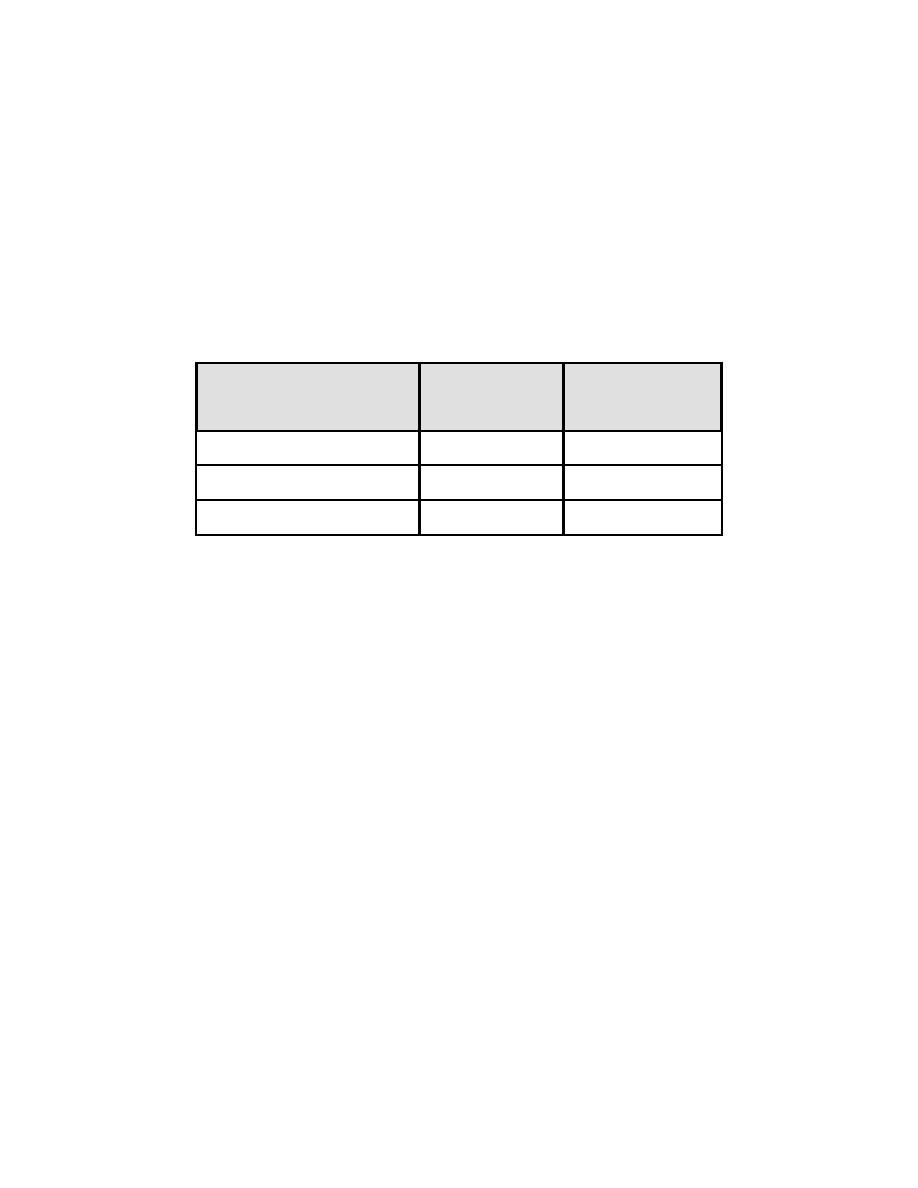
UFC 3-440-01
14 June 2002
model can still be used with a correction for propylene glycol, since such use will be
conservative. In addition, although these flows are often laminar, they are usually near
the laminar/turbulent transition point where pipe bends and flow restrictions can easily
trip laminar flow to turbulent. The design operating temperature of the collector loop
should be between 60 and 90 degrees F (15 and 32 degrees C), with the 60 degree F
(15 degrees C) value preferred because it is the lowest temperature (thus highest
viscosity and pressure drop) that steady-state operation could be expected. If a higher
temperature is to be used, the designer should apply the standard temperature
corrections for water before correcting for the use of propylene glycol.
Table 4-1. Pressure Drop Corrections
Heat Transfer Fluid
Pressure Drop
Velocity Correction
(Percent Propylene-Glycol)
Correction
(Estimated)
50 (closed loop)
x 1.4
x 0.8
30 (closed-loop)
x 1.2
x 0.9
0 (direct circulation)
(x 1.0)
(x 1.0)
4.2.2.6.3
Flow Balancing. Flow balancing of the main array supply manifold and its
associated risers can be accomplished using the "30 percent rule" cited earlier. To
begin, the pressure drop in the risers must be known - this usually means that the flow
balancing calculations start with the collector banks since the pressure drop across a
collector bank can be considered to be the same as the pressure drop across a single
collector. The flow rates required in all branches must also be known. A first guess of
the manifold internal diameter should be made. Each section of manifold between the
risers will have a different flow rate, and the pressure drop associated with each flow
rate and pipe length must be determined. The sum of each of these pressure losses
will be the pressure drop along the entire manifold. This pressure loss is compared to
the pressure drop across the riser (in this case, the row or bank manifold), and if it is
less than 0.3 (around 0.1 is preferred) of the bank manifold pressure drop, the
proposed diameter is acceptable from a flow balancing point of view. This assumption
neglects the additional pressure loss associated with the bank manifold and its
connections, and is thus conservative. If the proposed diameter is too small (or too
large), another guess should be made. Figure 4-6 and Figure 4-7 provides an example
of sizing a manifold to provide balanced flow while satisfying both the 30 percent rule
and the 5 ft/s (1.5 m/s) velocity restriction.
4-10


 Previous Page
Previous Page
